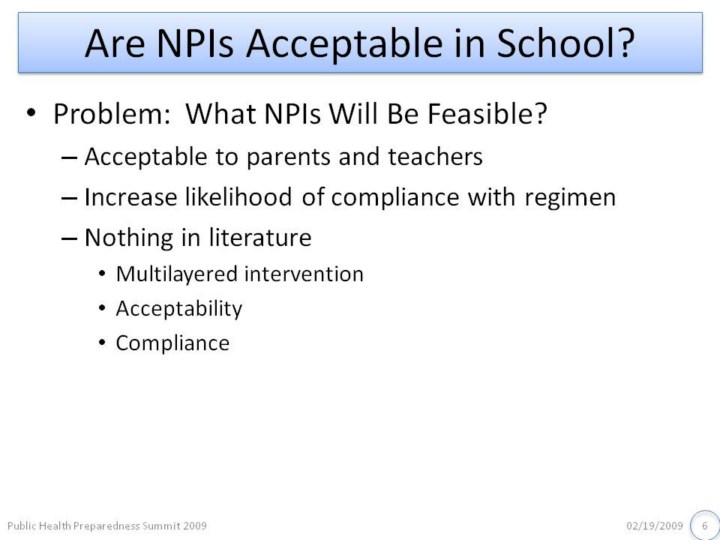| front |1 |2 |3 |4 |5 |6 |7 |8 |9 |10 |11 |12 |13 |14 |15 |16 |17 |18 |19 |20 |21 |22 |23 |24 |25 |review |
 |
Understanding the acceptability of a range of NPIs is of critical importance, given that a highly effective behavioral intervention is of little use if those who need it fail to use it. This topic is both relevant and important for two reasons. First, there is often a significant disconnect between “policy from the top” and what can be practically achieved in a given environment. Second, there is a paucity of research on the attitudes of teachers and parents in public elementary school settings. An exhaustive search of the literature including PubMed, OVID Health and Psychosocial Instruments, OVID Medline, and Scopus yielded only two articles looking at combinations of interventions in a community setting. Sheriff and colleagues looked at the actual use of multilayered sanitary practices with children, but not their acceptability. Kristiansen and colleagues looked at multilayer interventions for flu, but in a very simplified way (using just one question), and also addressed to a population of adult Norwegians, not Americans.
|